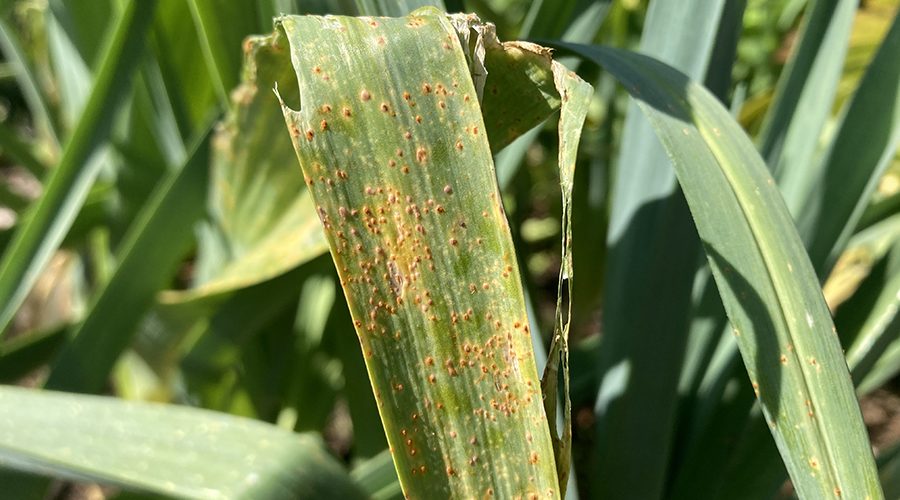The turning season, from late summer to early autumn, can often bring with it the perfect conditions for various fungal diseases to take hold in the veg garden. Below are five of the most common that you can look our for – most fungal infections will affect the leaves first, so you can check the leaves for brown spots, white patches, mould, black patches, downy coatings etc.
What can I do if I spot a fungal disease?
As a general rule, you should remove the affected leaves as soon as possible and get rid of them to stop the disease from spreading. Ensure plants have adequate air circulation by pruning out some of the leaves, and be careful when watering to avoid getting the leaves wet as far as possible. You may find a mulch or liquid feed helps in some cases, by providing the plants with a nutrient boost to help them fight off infection.
Will I need to get rid of affected plants?
If the plant is too badly damaged, you may have to pull it up, but if you can see healthy new leaves forming at the growing tips, then all is not lost, so hang in there.
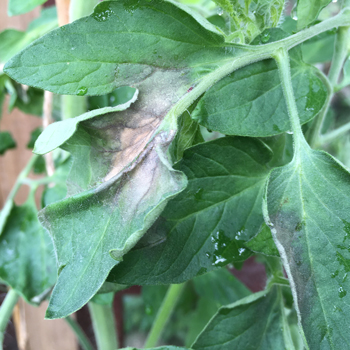
Blight
Blight usually affects tomato plants (as pictured) and potato plants. It’ll start with brown patches forming on the foliage, which will eventually start appearing on the stems and then in the potatoes/tomatoes themselves.
For tomatoes, if you have plenty of green tomatoes ready to ripen, we’d suggest pruning out as much foliage as possible and hopefully the tomatoes will ripen before they are affected.
For potatoes, cut back all foliage to the base and remove. You can then leave the tubers in the ground for another week or so before harvesting.
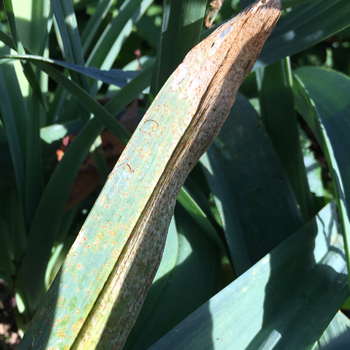
Leek Rust
Usually seen on leek plants and other onion plants including garlic and spring onions, rust appears as little brown-orange dots on the leaves. It can be more common in nitrogen-rich soil, and will be more likely to develop if moisture levels in the soil have been inconsistent due to very dry and then very wet spells.
You can still harvest your leeks and cook them – just peel off the affected leaves before you wash and chop them. If they’re not too badly affected, you can remove diseased leaves (being sure not to leave them lying on the soil) and the plants may recover.
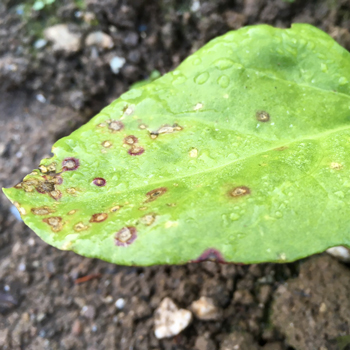
Leaf Spot
This is such a common problem for spinach and chard, especially if they are planted a little closely together. The best thing you can do is to keep picking out the unhealthy leaves, then pick a few of the healthy leaves as well so that there is plenty of air moving in and around the leaves that are left growing on the plant.
You should be able to see that the newer foliage is nice and healthy, and hopefully it will stay that way if you keep picking often.
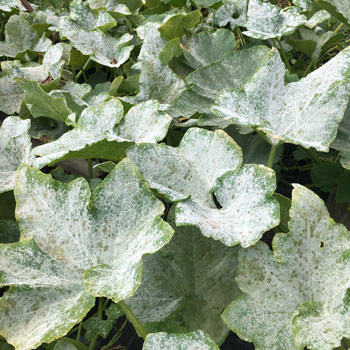
Powdery Mildew
This silvery sheen of mildew is most likely to affect courgettes and squashes, although you may also see it on pea plants. It’s very common, and you’ll find that it affects the older, larger leaves first. It’s a very normal part of their life cycle as we come to cooler temperatures in late summer and early autumn. We have found that climbing squash (that isn’t trailing on the ground) tends to be less affected as they have better air circulation.
For courgettes and squashes, use secateurs to cleanly cut back the affected leaves, and newer leaves will probably come through crisp and green. It shouldn’t affect the fruits so you can still get a good crop. For peas, just keep picking the pods until they run out, then pull up the plants.
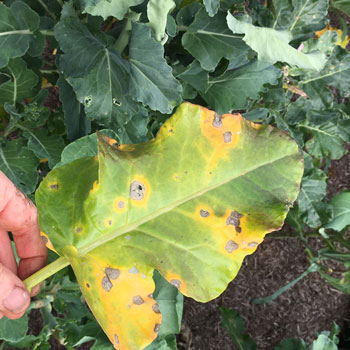
Alternaria Leaf Spot
This is one that you’ll see a lot on brassicas as the older, larger leaves start to turn yellow and form spots as pictured. It’s not a huge problem at all – just keep picking off the affected leaves and don’t let them sit on the ground rotting (because they’ll attract slugs as well as continue to spread the fungus.)
Keep the plants as free as you can from yellow leaves, make sure you give them a liquid feed to boost nutrients and they should keep going quite happily until they reach maturity.

